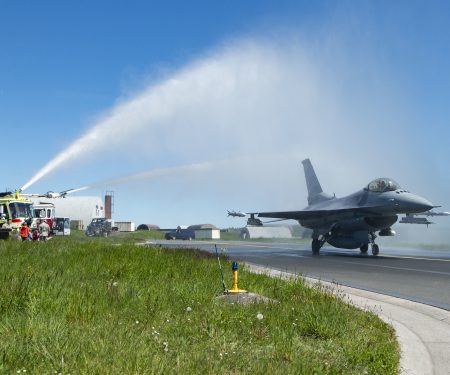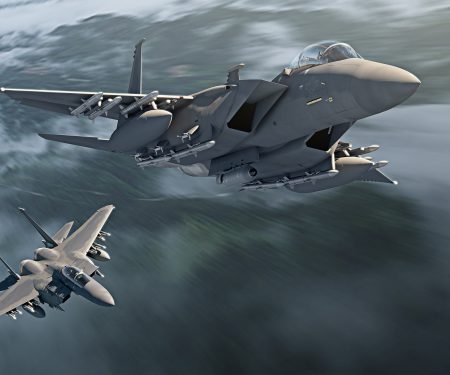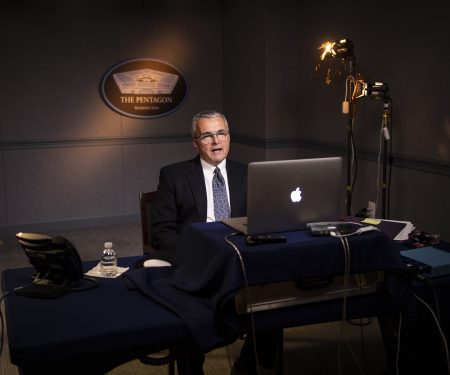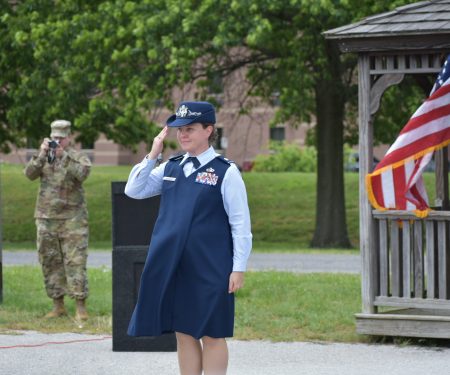Radar Sweep
Snapshot: DOD and COVID-19
Here's a look at how the Defense Department is being impacted by and responding to the COVID-19 pandemic.
How a Secretive Pentagon Agency Seeded the Ground for a Rapid Coronavirus Cure
The scientists were working through the night over a weekend in February in their Vancouver offices, running a blood sample from an early American covid-19 survivor through a credit card-sized device made up of 200,000 tiny chambers, hoping to help save the world. Their mission was part of a program under the Pentagon’s secretive technology research agency. The goal: to find a way to produce antibodies for any virus in the world within 60 days of collecting a blood sample from a survivor.
Boeing’s Coronavirus Losses Now Bleeding Into Its Defense Accounts
Boeing losses from factory closures and production slowdowns caused by the coronavirus pandemic are starting to bleed into the company’s defense projects, according to executives and financial documents.
Bipartisan Backlash Scuttles Senate Hearing for White House Favorite
The head of the Senate Armed Services Committee abruptly canceled a planned nomination hearing for a controversial former general being considered for a top Pentagon position on the morning of July 30, throwing the nomination into doubt.
Russia and China Are Catching Up on Hypersonic Missiles Amid US Neglect, Expert Says
Russian President Vladimir Putin boasted July 26 of nearing deployment of nuclear-tipped hypersonic missiles with his Navy, upping the ante in a three-way arms race with the U.S. and China to develop super-fast missiles that can penetrate any existing defensive system.
Air Force B-1 Bomber Trains with Japanese Fighters
A B-1B Lancer bomber flew from Guam to the South China Sea on Monday to train with Japanese fighter jets.
Joint NNSA Strategic Nuclear Deterrence Forum with Charles P. Verdon
On July 29, the Air Force Association's Mitchell Institute for Aerospace Studies and the Advanced Nuclear Weapons Alliance Deterrence Center welcomed Charles P. Verdon, NNSA deputy administrator for defense programs, for a forum entitled "Nuclear Weapons Complex Modernization, the Cornerstone of our Strategic Nuclear Deterrent."
Was the Pentagon’s Blacklist of Chinese Companies Justified?
When Defense Department officials released a list of companies it claimed were linked to Chinese military activity back in June, they didn’t provide much explanation or evidence. Naturally, some of the companies on the list protested, claiming unfair treatment and no involvement with the Chinese government. So who is right?
Serbia Notes Interest in Boeing-Saab T-7A Red Hawk Jets
The Boeing-Saab T-7A Red Hawk is one of the options that Serbia is considering as a replacement for its existing jet trainer and light attack fleets.
Faster Acquisition
The Air Force is leveraging emerging technologies and new legislation to accelerate acquisition decisions and streamline sustainment. Read more here.
Original Stealth Aircraft, F-117 Nighthawk, Coming to Air Zoo Museum
The Air Zoo Aerospace and Science Museum will be a “proud recipient” of one of the first Lockheed F-117 Nighthawks released for public display at a non-military institution, the Air Zoo said in a July 28 Facebook post.
The Night a Mysterious Drone Swarm Descended on Palo Verde Nuclear Power Plant
In a trove of documents and internal correspondences related to the event, officials from the Nuclear Regulatory Commission described the incident as a "drone-a-palooza" and said that it highlighted concerns about the potential for a future "adversarial attack" involving small unmanned aircraft and the need for defenses against them.







